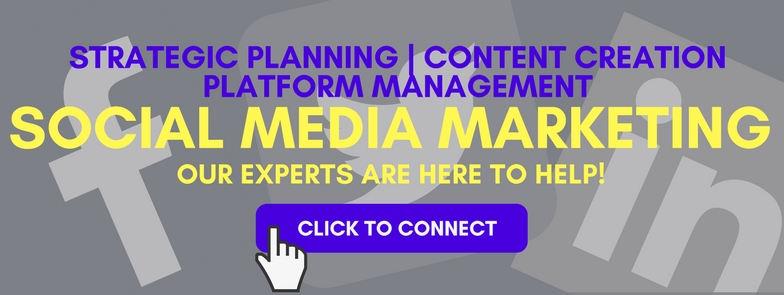Facebook, Twitter, Instagram, Pinterest, LinkedIn…
Sometimes the number of social media platforms that we need to post on — and keep straight — seem endless. But, if you’re running a marketing campaign for a business and your target audience is on social media, then you must have the right presence on the platforms where you can best reach that audience.
The question is… are you posting enough on social media? And, how much is too much?
Being connected to the social world is vital for marketing strategy and business growth. But, don’t count on a few copy and pasted Facebook posts to drive traffic and increase engagement — your strategy must align with the social sites’ algorithms. This strategy is one of the most powerful tools in the social media sphere.
Your posting frequency on social media can make or break your marketing success.
It’s tough to strike a balance between not posting enough and posting too much. Businesses need to find the sweet spot with their social audience: what is the number of times they can post per day to stick in news feeds and minds of their followers without becoming a spammy and annoying? (And unfollowed!)
That’s what we’re about to tell you.
There is a way to master posting frequency across all platforms. Remember that strategy we mentioned earlier? It’s all about setting social media goals, understanding your audience, and maximizing content.
Let’s take a look at the top five social media platforms and analyze the appropriate posting frequency strategies for each.
 Facebook
Facebook
The mother of all social media platforms, for most businesses, is Facebook. This one can be tricky, because the recommended number of posts per day depends on the size of a business’ following. There’s a common theme with the “two posts per day” rule you may have heard before. The common theme? A large following.
This two per day rule is a great guideline for businesses with 10,000 followers or more – two posts will certainly maximize content engagement and website traffic.
However, most businesses have a smaller following, ranging anywhere from a few hundred to a few thousand followers. It is usually best for these businesses to stick to one regular post per day. In fact, a study from Hubspot found that organizations with fewer than 10,000 followers received fewer clicks if they posted more often than once per day on Facebook.
On the flip side, smaller businesses may get more content engagement with two posts per day. If your main goal isn’t to drive website traffic, but instead to engage with followers, then two times per day can work if you focus on the right content to engage your audience. For instance, posting items that drive your audience to interact directly with you as you respond in real-time. This strategy can also change from week to week depending on what’s timely, trending, and relevant to your audience.
Here’s the key piece of advice in all of this: don’t flood your followers’ timelines with content. Be selective about you post, focusing your Facebook marketing strategy on creating one to two quality posts per day instead of wasting time and resources (and your audience’s time) posting multiple Facebook posts per day. And never post just for the sake of posting. If your content is not relevant, you may lose followers.
Big or small, at the bare minimum, businesses should curate or share a post every other day.
Recent blog: How to Survive Facebook’s Algorithm Changes.
Twitter
The second biggest social media platform, Twitter’s rules sway similarly toward Facebook’s algorithm. First set your goals. As a business, what are you looking to get out of your Twitter efforts? Heightened awareness for your brand? Name recognition? More people to walk through your door? Increased website traffic? Each goal will require a different set of actions on Twitter.
If you’re looking to optimize your followers’ engagement per tweet, then your sweet spot is the low end of the spectrum for posting, somewhere between five to 10 posts per day. If you want to produce more response overall, then there really isn’t a limit. But, let’s remember the rule of posting without being annoying and spammy! As a general rule, stick to tweeting nore more than 10 to 20 tweets per day – that’s just enough to tweet every few hours throughout the day, creating more opportunities for retweets.
Many of you might be thinking: but I’m only tweeting once or twice per day. If that’s the case, your tweets are not reaching their full potential audience. Every second, 6,000 tweets get sent out. That’s more than 500 million tweets per day! If yours is only one of them, you’re definitely getting lost in the swarm of content. Also consider what your own Twitter feed looks like each time you log in. Do you scroll back through hours and hours of tweets? No. Neither does your audience. Posting more frequently on Twitter makes it more likely that you message will be heard. Just be sure to avoid tweeting the same exact post more than once, per Twitter’s algorithm, and use hashtags to make sure your messages get found.l
Also, aim to retweet about seven to 10 tweets per day. This opens up a whole new stream of engagement, and more opportunities for new connections and followers.
Start conversations with other players in your arena: this engages followers and can drive website traffic with people trolling your business’ social pages out of curiosity.
Instagram
When it comes to the third (but still huge!) platform, posting frequency doesn’t majorly affect your marketing efforts. Instead, the focus should be on consistency: don’t disappear for days or weeks at a time. Be present and post on a regular basis. Businesses actually risk losing followers if they run out of content ideas and stop posting consistently.
The Golden Rule of Instagram: one or two great posts a day is better than 10 to 15 not-so-great posts. Don’t risk engagement and followers just because you want to fill Instagram feeds with content.
When it comes to sharing posts, Instagram is a lot different that Facebook and Twitter. Businesses should only share content when it’s necessary and benefits the audience in some way.
Recent blog: 5 Foolproof Social Media Tips for 2018.
The fourth social media platform, Pinterest is all about visual content and being able to find like minded people with similar interests. Consistency is key with Pinterest, whether you are posting, pinning, creating a board, or following new feeds, you should be using this platform everyday. That’s right: every single day.
When it comes to posting, it is better to divide up your content and post multiple times a day through the course of a week, rather them posting all of the content at one.
Helpful Hint of Pinterest: pins (content) that corresponds with an upcoming season, event, or holiday, it is recommended to start posting 45 days prior to the event.
The fifth and final platform, LinkedIn is home of relevant and professional content and is the top platform for B2B marketers to distribute content. When it comes to posting, just like on all platforms, it is best to customize your message for your audience and to make it fit with LinkedIn because the content that may work on other platforms may not always work best here. In short: keep this content office friendly.
LInkedIn recommends that you should post quality content daily. If you cannot post daily, it has also been found that 20 quality posts monthly can improve your reach by a whopping 66 percent.
Use The Analytics: try out posting your content at different times and then look at the analytics and see if there is a trend. If there is make sure to be posting at that time for the best reach.
There’s one more secret weapon to this posting strategy…
Repurposing content.
In marketing, we used to use the rule of threes when distributing content. This meant that one piece of content would be used in a minimum of three ways. For instance, a press release would be sent to the media, published on a website, and shared via company newsletter. Social media now amplifies that rule and gives us multiple places to publish one piece of content — all online. Make sure you’re leveraging this to your benefit and repurposing your own content to the fullest extent.
If you create a blog that provides valuable information to your audience, don’t simply post it once and then leave it to die a slow death. Strategically use it across multiple platforms more than once. But beware of our keyword: strategically.
Businesses small and large: use your content wisely!
If the same exact content is being shared multiple times per day, it will get swallowed up by social media algorithms. These algorithms give readers a real-time social media experience, providing fresh and unique content on their feed throughout the day. So, if you’re using the same content and language in all of your social media posts for your business, you could be killing your marketing efforts before they even take off.
Choose a core piece of content and use it to develop posts for the different channels that your business is active on. For example, produce a podcast about your success story and how you built the framework for your business. When you post the podcast on Twitter, write something that highlights the angle about building a business plan. When you post the podcast to Facebook, focus the post on the success story of start-up entrepreneurs. You can even further repurpose the content by doing things like tweeting quotes from your article, pulling in web traffic.
Social media strategy is a core part of the foundation for a successful business, and mastering this strategy will drive marketing efforts. Business owners and marketers: get ahead in the game by engaging with your followers and gaining an understanding of the content they want to see. Use this information to maximize your content and nail down your posting strategy. These tactics will help you find the right balance of posting without chasing your followers away.



